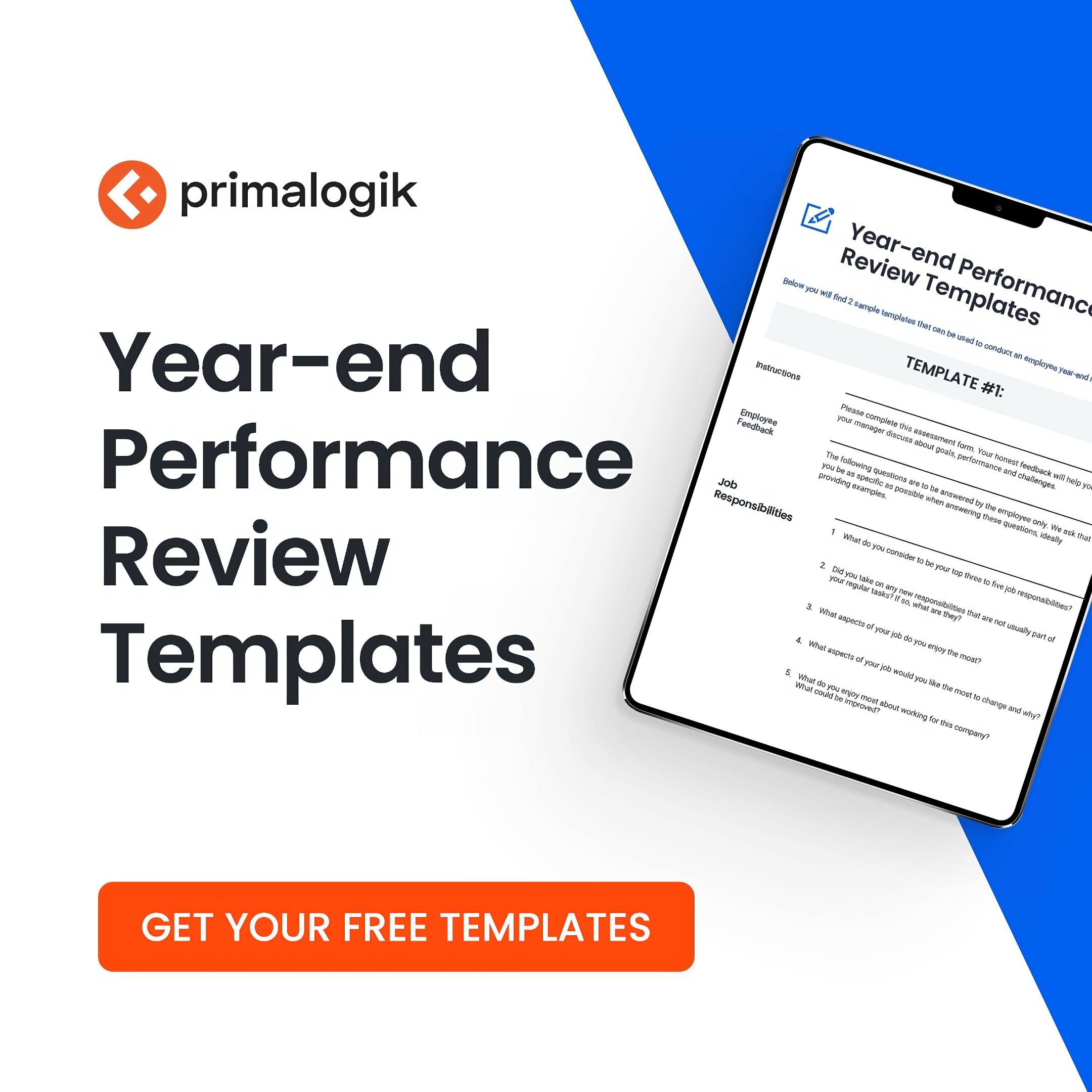When managing direct reports, you may need to design a performance improvement plan at some point. In fact, it can be a critical way to help a struggling employee improve.
But what is a performance improvement plan, exactly?
A performance improvement plan (PIP) is a formal document that details how an employee must improve. Typically, PIPs are created for employees who aren’t fulfilling the requirements of their role. They must meet the objectives outlined in the PIP to stay in their job.
We’ll discuss how to establish, implement, and monitor a performance improvement plan. But first, let’s examine its purpose in more depth.
Table of Contents
1. Purpose of a Performance Improvement Plan
2. Assessing the Need for a Performance Improvement Plan
3. How to Write an Effective Performance Improvement Plan
4. How to Implement and Use a Performance Improvement Plan
5. How to Survive a Performance Improvement Plan
Purpose of a Performance Improvement Plan
What are the purpose and benefits of a performance improvement plan?
- Minimizing turnover of valued employees.
- Enhancing employee growth.
- Improving communication between managers and employees.
The PIP helps people understand exactly how they must grow. It also allows management to assess whether they have successfully made these changes.
Providing a Pathway to Improvement
A performance improvement plan gives employees a step-by-step way to improve. Those who are struggling will greatly benefit from this plan. Further, the PIP sets time-sensitive goals to prompt timely action.
If an employee is at risk of termination, a PIP lets them know where they stand. At this point, employees should already have a strong idea of how they are performing. Managers should be holding regular one-on-ones for this purpose. But the performance improvement plan can underscore the critical need for growth.
Plus, it can give clearer, more concrete guidance to struggling employees. Additionally, it provides accountability. Both managers and employees can refer back to the formal plan document to monitor improvements.
Finally, if a termination must ultimately occur, the PIP outlines why it was necessary. This can help the company avoid legal issues.
How Not to Use a Performance Improvement Plan
Be careful not to use PIPs only as a step toward firing employees. While firing an employee may occasionally be necessary, PIPs should lead to growth. If that’s not happening, it could be a sign of poor management practices.
Are there any drawbacks to a performance improvement plan? Most notably, designing, implementing, and monitoring it can take time. So, evaluate whether it’s the right course of action before starting, as we’ll discuss next.
Assessing the Need for a Performance Improvement Plan

First, consider the problem you need to address. Asking yourself these questions will help.
Has the employee engaged in behaviour that can be improved through a PIP?
If the employee has displayed a pattern of unethical behaviour, a PIP probably won’t help—unless this person truly wants to change. Consider whether the problem involves a lack of integrity.
Do you believe the employee can improve?
Does this individual possess the talent and willpower to grow in their role? Or is the role simply a poor fit? In this case, you might consider alternatives. For instance, perhaps the employee could be transferred to a new position. HR should then lead the development of a new PIP, coordinating with the new and prior managers.
How long has the issue been occurring?
If it began recently, the employee may be dealing with a personal challenge that is affecting their performance. Without prying, have a private conversation with the employee about your concerns. See if the employee volunteers possible reasons for it. This will help you assess whether a PIP is in order or whether another solution could help.
(For instance, does the employee mainly need help with childcare to regain work/life balance?)
Is the problem individual or structural in nature?
Consider whether the performance issues at hand relate to working on a remote or hybrid team. People in certain roles may struggle more than others because of their duties. Think about whether any structural changes would benefit employees.
An employee’s manager should write up a detailed rationale for the PIP to share with HR, SHRM advises. This writeup should share examples of the employee’s behaviour or performance, along with dates if possible. The manager should also share actions that he or she has already taken to address the problem.
How to Write an Effective Performance Improvement Plan

Let’s discuss how to draft a performance improvement plan. HR should work with the manager to create the PIP.
- Define the problem and goal.
Determine the issue(s) you need to correct. Then establish your main goal, or goals, for the performance improvement plan. Talk with employees about this—involving them in goal-setting makes them 3.6% more engaged.
During this phase, review the employee’s job description. Make sure your goal falls within its scope.
- Set the timeframe.
Specify the date by which you expect the employee to meet the goal. PIPs often last 30, 60, or 90 days, says SHRM. This will depend on the complexity of your goal.
State milestones that fall within this timeframe, too. Note the dates when you expect to see the employee achieve them.
- Identify skills needed.
State the specific skills the employee needs to develop in order to meet the goal.
- Determine training opportunities.
Specify the training the employee will need to develop those skills. State exactly where and how the employee will access the training. Create a calendar that shows when the employee will undergo particular learning opportunities.
- Specify support provided.
The manager should commit to meeting with the employee on a regular schedule. For instance, they might meet once per week to discuss progress.
Enlist the employee’s help in creating the plan. HR and the manager will drive the creation of the plan, but employees should share their input. This will help them feel more invested in following through.
Performance Improvement Plan Checklist
Review this list to make sure you’ve covered all bases in your PIP.
- Define what success looks like.
- Establish clear, objective metrics for evaluating progress.
- State the training needed and how the employee will access it.
- Specify consequences—what will happen if the employee does not achieve the objectives.
Now, let’s look at what to avoid so your PIP won’t backfire.
What to Avoid in Creating a PIP
When writing a performance improvement plan, steer clear of these common mistakes.
- Sounding too lenient. You need to see improvement; otherwise, you wouldn’t be creating a PIP. The employee needs to understand the gravity of the situation.
- Harping on consequences. Although you need to state potential outcomes, don’t focus on negative repercussions. This would come across as threatening and disempowering. Maintain an objective, neutral tone in the written document. In your conversations with the employee, be straightforward but optimistic.
- Only making demands. The PIP should strongly emphasize support and training provided.
Below, we share a template for creating a PIP.
Performance Improvement Plan Template
Employee Name:
Role:
Supervisor:
Date:
___________________________________________________________________________________
Issues to Address:
___________________________________________________________________________________
Developmental Goals (list up to 3, with milestones below them): Achievement Date:
a:
b:
c:
a:
b:
c:
a:
b:
c:
___________________________________________________________________________________
Training Requirements: Start Date: Completion Date:
1.
2.
3.
___________________________________________________________________________________
Follow-Up Meetings (specify a routine date and time, if possible):
___________________________________________________________________________________
SHRM provides an example memo notifying an employee of a PIP. Using these templates will help ensure you don’t skip over important details.
Example of a Performance Improvement Plan
Employee Name: Amy Smith
Role: Marketing specialist
Supervisor: Jill Greyson
Date: 01/18/2023
___________________________________________________________________________________
Issue to Address: Amy has outstanding people skills. However, she has been resisting new technology that the company’s operations now depend on. Her work has suffered because she hasn’t gotten up to speed. She also struggles to collaborate remotely and often seems disengaged from the team.
___________________________________________________________________________________
Developmental Goals (list up to 3, with milestones below them): Achievement Date:
- Gain proficiency in the new software. 1/3/2023
a: Successfully complete training on using it. 1/24/2023
b: Apply this knowledge in her daily work. 2/15/2023
c: Teach a new hire to use the software. 2/28/2023
- Successfully collaborate remotely with team. 1/3/2023
a: Participate actively in group brainstorming and work sessions. 2/15/2023
b: Bring positive energy to group collaborations. 2/22/2023
c: Engage in group work that results in successful project completion. 2/28/2023
___________________________________________________________________________________
Training Requirements: Start Date: Completion Date:
- Complete software tutorial. 1/19/2023 1/24/2023
- Shadow colleague who uses it 1/20/2023 2/15/2023
proficiently (3 sessions).
3. Check in with a peer mentor 1/20/2023 3/1/2023
at least twice a week to address
questions.
4. Take workshops on building skills 1/26/2023 2/15/2023
for remote collaboration.
___________________________________________________________________________________
Follow-Up Meetings (specify a routine date and time, if possible):
Meet with supervisor at 11 a.m. on Fridays.
___________________________________________________________________________________
How to review and implement a performance improvement plan.
How to Implement and Use a Performance Improvement Plan

Whether you have a remote, hybrid, or in-person workforce, you’ll follow the same process to implement a PIP.
Discuss the Problem—and the Plan
Have a conversation with the employee to introduce the performance improvement plan. An HR staff member might join the employee’s manager for this discussion, notes Forbes. Get the employee’s input about the steps of the plan. Determine whether any modifications are needed. Then discuss in detail how the employee will fulfill its requirements.
Monitor Progress
As you implement the PIP, assess progress continuously. Use performance management software to do this as accurately as possible. These tools will let you observe progress on a daily basis, assessing how the employee is performing key tasks. Especially with remote and hybrid teams, such tools are indispensable.
Look at factors like quality of work, client satisfaction (if applicable), and timeliness. Analytical software that tracks performance can also help you observe patterns over time. How does the employee’s performance compare to three months ago? To last year?
Assess Results
As you approach the end of the designated timeframe, evaluate whether the employee has achieved the goal. Be flexible if appropriate. “When the employee is committed to improvement but falls short of the objectives within the established timeline, it may be worthwhile to extend the plan to give him or her a bit more time to succeed,” writes SHRM.
If the employee is making clear progress, you might allow a few more weeks to get up to speed, for instance. Use software to observe patterns and make predictions that inform your choice.
What if you’re on the receiving end of a performance improvement plan? We have some advice for those in that situation. If you’re a manager, share this guidance with employees going through a PIP.
How to Survive a Performance Improvement Plan
Receiving a performance improvement plan can feel stressful. With the right approach, though, you can impress company management and get back on track.
- Know that if you’re receiving a PIP, your company values you. They want to keep you on board.
- Avoid being defensive. Instead, be curious. Seek input on where and how to improve.
- Take initiative. Follow up with your boss, asking about your progress. Reach out to set up meetings if you don’t have a time set already. Take advantage of every training opportunity provided. Show you’re taking the process seriously.
If you have a proactive approach to improving, managers will leave the conversation feeling optimistic. “This is an employee we want to keep,” they’ll think. And they’ll do everything they can to support you in that effort.
When managers and employees both put in effort, a PIP can result in greatly improved performance. The employee will then experience a significant boost in morale. Though introducing a performance improvement plan can be initially uncomfortable, remember the major benefits it can bring!
Explore how software can guide the implementation of a performance improvement plan. Sign up to demo our product.





